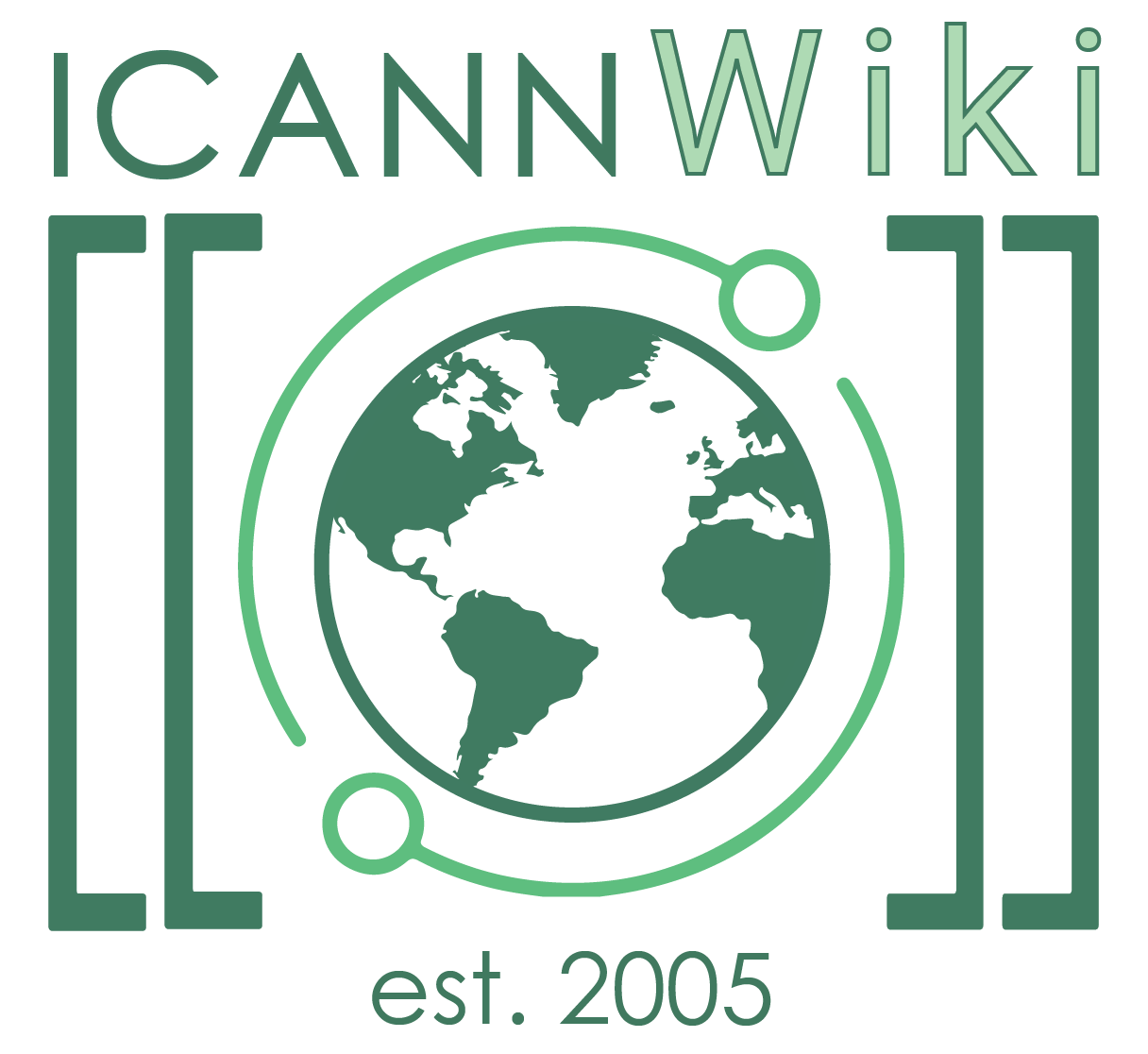Country code top-level domain
For the technical specification, see RFC 1591.
A Country Code Top-Level Domain (ccTLD) is a two-letter Internet top-level domains (TLDs) specifically designated for a particular country, sovereign state or autonomous territory for use to service their community. ccTLDs are derived from ISO 3166-1 alpha-2 country codes.[1]
Implementation[edit | edit source]
The implementation of ccTLDs was started by IANA, which is not a physical organization or an individual but it is part of ICANN.[2] The delegation and creation of ccTLDs is presented within RFC 1591. In order to determine whether new ccTLDs should be added or not, the IANA follows the provisions of ISO 3166 - Maintenance Agency. Briefly, "our policy is to create new country-code top-level domains when the country or territory is listed on the ISO 3166-1 standard."
More information related to the development of new ccTLDs can be found in IANA's Procedures for Establishing ccTLDs. [3]
IANA's Procedures for ccTLDs[edit | edit source]
Within its database, IANA maintains authoritative information related to ccTLDs. This includes sponsoring organizations, technical and administrative contacts, name servers, registration URLs and other such information. This type of information provides extra details regarding the IANA's procedures for maintaining the ccTLD database.
Delegation and Redelegation[edit | edit source]
The process through which the designated manager, or managers, is changed is known as redelegation. The redelegation process follows the provisions of ICP-1 and RFC 1591. IANA receives all requests of a sponsoring organization related to delegation and redelegation for the ccTLDs. The requests are then analyzed by IANA based on various technical and public criterion. The request, accompanied by the IANA analysis, is finally sent to the ICANN Board of Directors for approval or refusal. If approved, IANA is also responsible for the implementation of the request.[4]
Conceptually speaking, the delegation and redelegation processes are simple. However, they can easily become complex if there are many organizations and individuals involved in the process. There is a set of steps that must be followed before sending the request for delegation or redelegation. An initial request should be developed, based on The Change Request Template and supplementary information, to prove that the eligibility criteria have been met by the initial request. All the information supplied is used by IANA to analyze the request received.[4]
ccTLDs and ICANN[edit | edit source]
The policies developed by ICANN are implemented by gTLD registry operators, ccTLD managers, root-nameserver operators and regional Internet registries. One of the main activities of ICANN is to work with other organizations involved in the technical coordination of the Internet, with the purpose of formally documenting their participatory role within the ICANN process. These organizations are committed to the ICANN policies that result from their work.
In 2000, ICANN started cooperating with ccTLD managers to document their relationship. The relationships between ICANN and ccTLD mangers are often complex. Complexities arise due to various circumstances, including the type of organization, cultural issues, economics, the legal environment, etc. Another consideration is the role of the national government in "managing or establishing policy for their own ccTLD" (role recognized in the June 1998, U.S. Government White Paper).[5]
In 2009, ICANN began the implementation of an IDN ccTLD Fast Track Process,[6] whereby countries that use non-Latin script are able to claim ccTLDs in their native script and the corresponding Latin version. As of early 2011, 33 requests have been received, representing 22 languages.[7] More than half have already been approved.[8]
Pseudo-ccTLD[edit | edit source]
A pseudo-ccTLD mimics an official country code domain without formal recognition, often used for branding or to suggest geographical affiliation.
Generic ccTLD[edit | edit source]
A gccTLD is a country code top-level domain (ccTLD) that is considered generic due to its branding and usage. That's what gccTLD stands for, generic country code top-level domain. gccTLDs are seen by search engines such as Google as generic instead of country-targeted for search.[9] According to Google, "website owners frequently see these more generic than country-targeted", which led them to present them as generic.[10] Examples include ".co", which is used by many as an alternative to ".com" representing commercial, ".io", adopted by tech companies and ".ly", as a domain hack.
Open ccTLDs[edit | edit source]
Related Article - Open Use ccTLD
An open ccTLD refers to a country code top level domain name that can be registered by anyone, regardless of which country the person resides in. These ccTLDs generally represent a particular branding opportunity aside from the name of the country or territory it represents. Examples include .cc (Cocos Island) for consulting companies, .tv (Tuvalu) for television, .ws (Western Samoa) for websites, and .co (Colombia) as an alternative to .com for companies.[11]
Current ccTLDs[edit | edit source]
The following is a list of the current ccTLDs, including their registry operators and any special notes about registration of the domains.[12][13]
References[edit | edit source]
- ↑ ICANN ccTLDs
- ↑ Who created ccTLDs?
- ↑ IANA ccTLD
- ↑ 4.0 4.1 Delegation and Redelegation Guide
- ↑ White Paper, 2/25/2012, ICANN Resources
- ↑ IDN News
- ↑ ICANN
- ↑ AUSRegistry
- ↑ What is a gccTLD?
- ↑ Google Search Central: Managing multi-regional and multilingual sites
- ↑ Registrations in Open ccTLDs
- ↑ IANA Root Zone Database
- ↑ Wikipedia: List of Internet to-level domains
ICANNWiki resources: Special Pages | Content Guide | Documentation | Development || Maintenance: Articles needing attention | Candidates for deletion || Projects: Internet & Digital Governance Library
